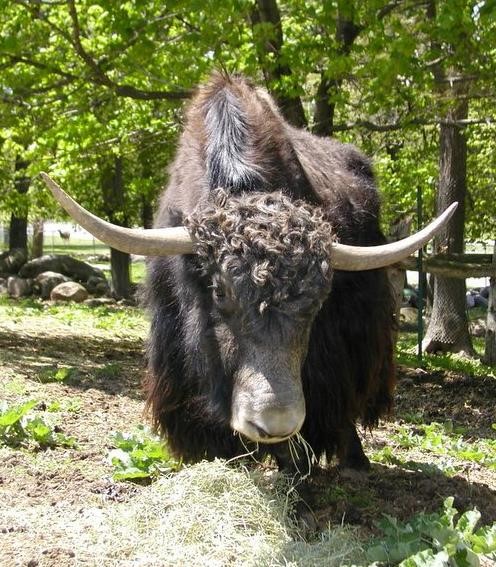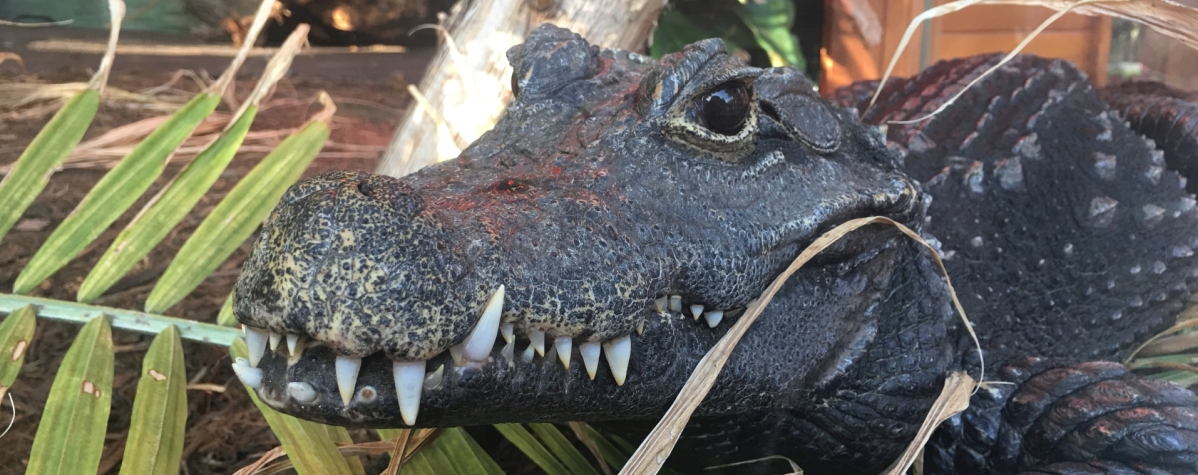Domestic Yak
Scientific Classification
| Species | Bos grunniens |
| Kingdom | Animalia |
| Phylum | Chordata |
| Class | Mammalia |
| Order | Artiodactyla |
| Family | Bovidae |
| IUCN Status | Not at risk |
Appearance and lifespan
The yak is a very strong sturdy animal. They have humped shoulders with short legs and rounded hooves. They have thick, shaggy fur that is short on their backs and longer on the sides and have wooly undercoats on their chests, flanks, and thighs. Both males and females have horns though the males tend to be larger and curve outward on the ends. Male horns range from 48 to 99cm (18 to 38 in) in length while female horns are typically 27 to 64cm (10 to 24 in) in length. The males are larger in size than females. They can weigh 800 to 1000kg (1763 to 2204 lb) and can be 1.6 to 2m (62 to 78 in) in height. Domestic Yaks are smaller than Wild Yaks. Domestic Yaks may live up to over 20 years.
Behavior and reproduction
Domestic Yaks can withstand very low temperatures and are very important to nomadic tribes of the region because they are so surefooted on steep mountain trails. They graze in the early morning and evening and sleep for the rest of the day. They may spend days in the same pasture as they do not like to move about too much. During a severe blizzard, a Yak will turn its tail into the storm and remain motionless for hours.
Mating generally occurs between July and September. For the rest of the year, males will wander in small groups away from the large herds. After a gestation period of 257 to 270 days, the female will give birth to, usually, one calf in a secluded spot. The calf can walk within ten minutes of birth and the pair will rejoin the herd. Calves are weaned at one year and will become independent shortly after. Females will give birth for the first time at 3 or 4 years of age and will reproduce every other year.
Ecology and Conservation
Domestic Yaks are herbivores, grazing primarily on low-lying grasses, shrubs, forbs, and cushion plants found on the Tibetan plateau. They will also consume lichens and mosses. Yak drink frequently in the summer and will eat snow in the winter.
Yaks are protected in China; however, their numbers are still declining. Domestic Yaks are not yet threatened with over 14 million individuals still remaining.
Food at the Zoo
At Riverview Park and Zoo, domestic yak are fed diets consisting of alfalfa, herbivore cubes, apples and carrots. Salt blocks are provided as well as browse consisting of apple, willow, poplar, pear and maple leaves.
Threats
There are still over 14 million Domestic Yaks in the world and are therefore not at risk. However Wild Yak numbers continue to decline due to illegal hunting, natural predators, and competition with Domestic Yaks for food, making them a Vulnerable status species.
Did you know?
- Yaks have some of the strongest odours of any domesticated animal, often described as a combination of cow manure and wet dog.
- Due to its large lung capacity, yaks can survive in the Himalayas at an altitude as high as 6 kilometres, which is the highest elevation of any mammal’s habitat.
- They will make frequent grunting noises, giving them the name “grunting ox.”
Adopt the yak
Become a part of the the Riverview Park and Zoo family through our Adopt an Animal Program!


